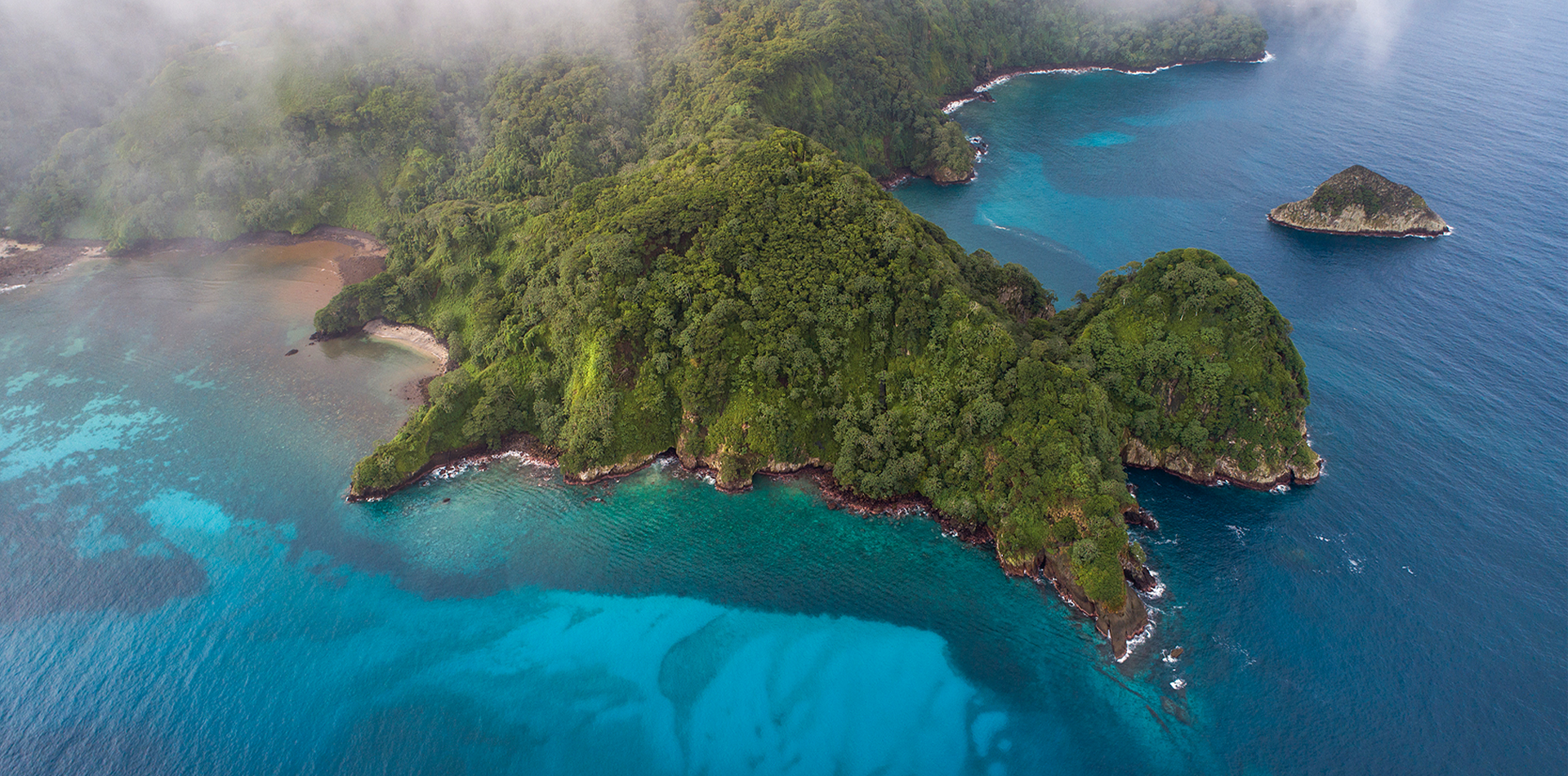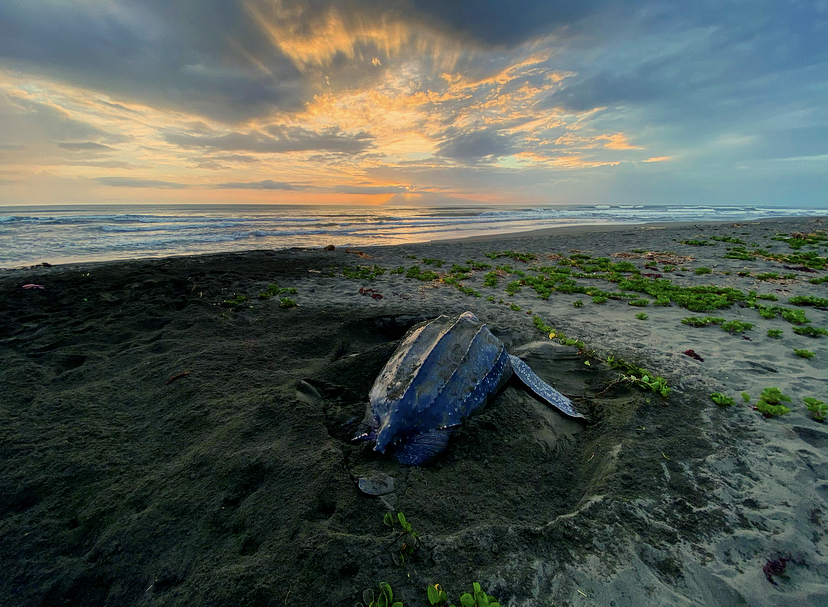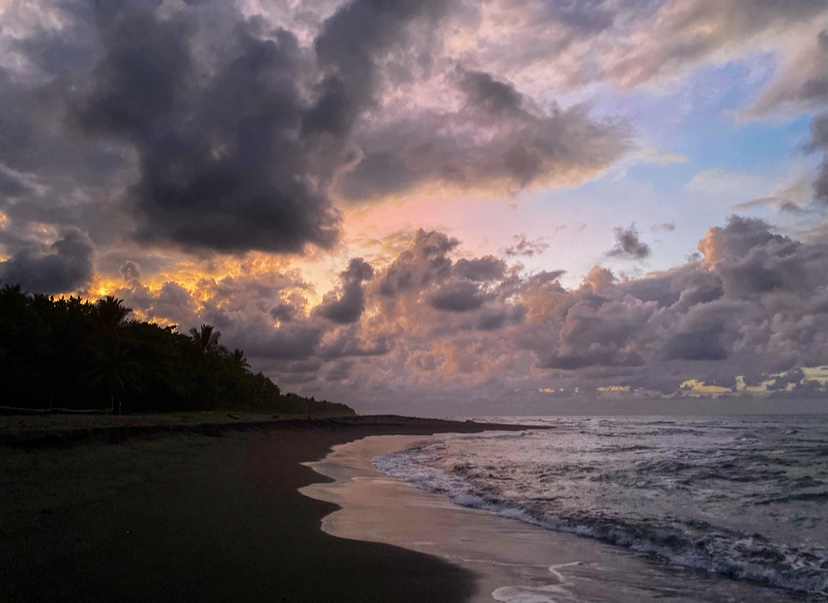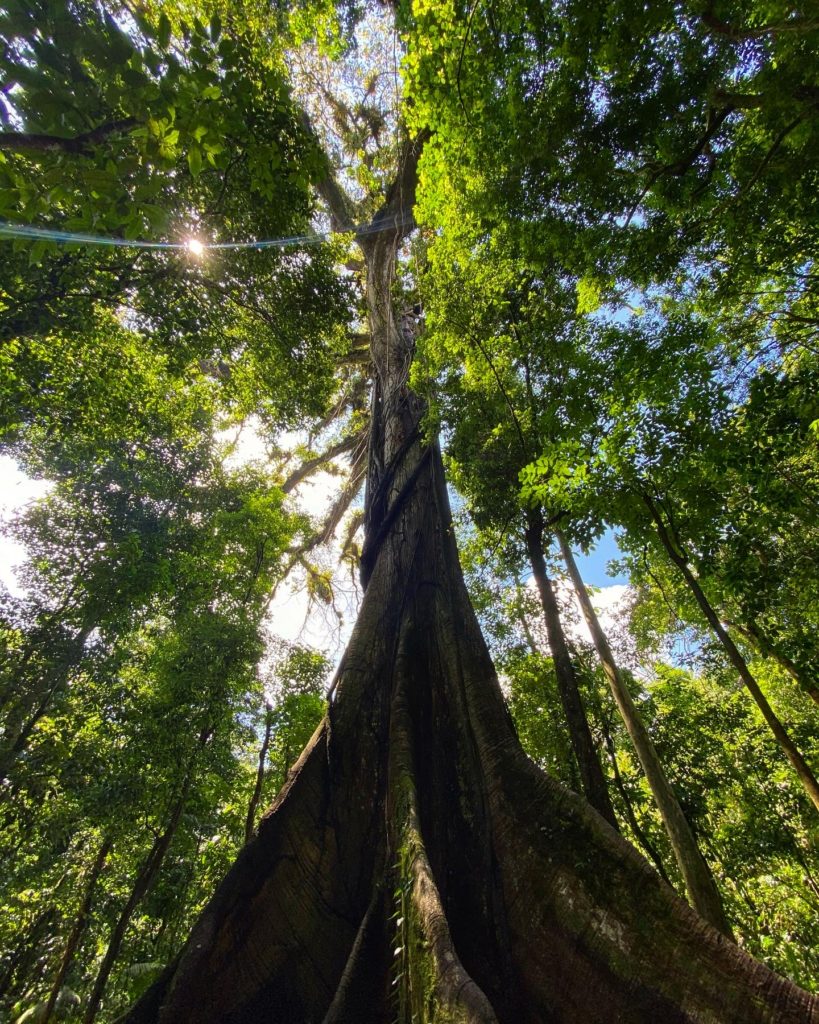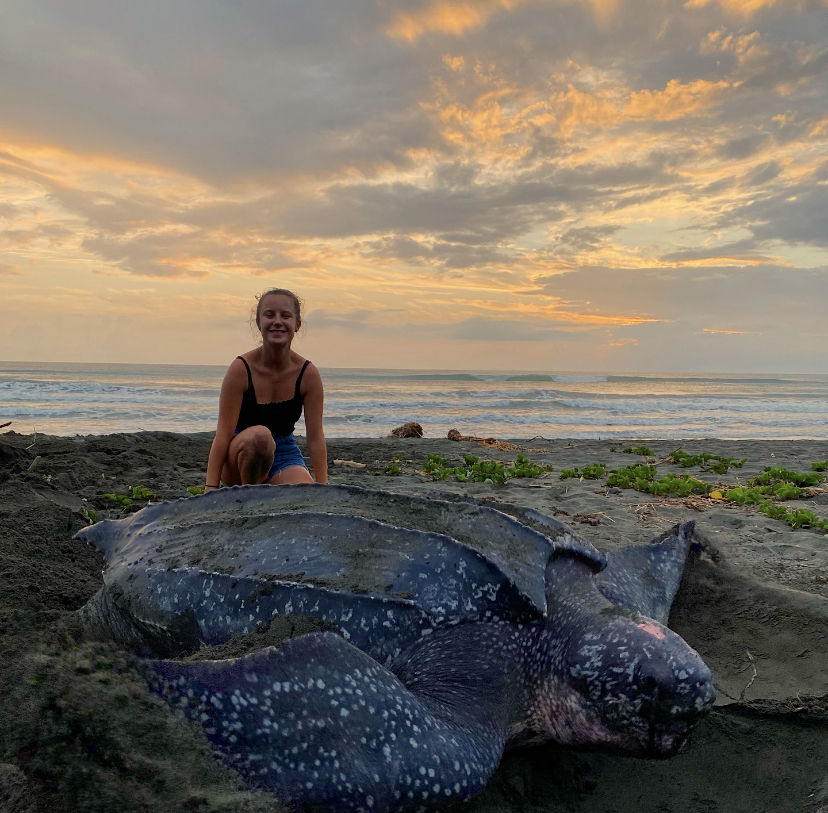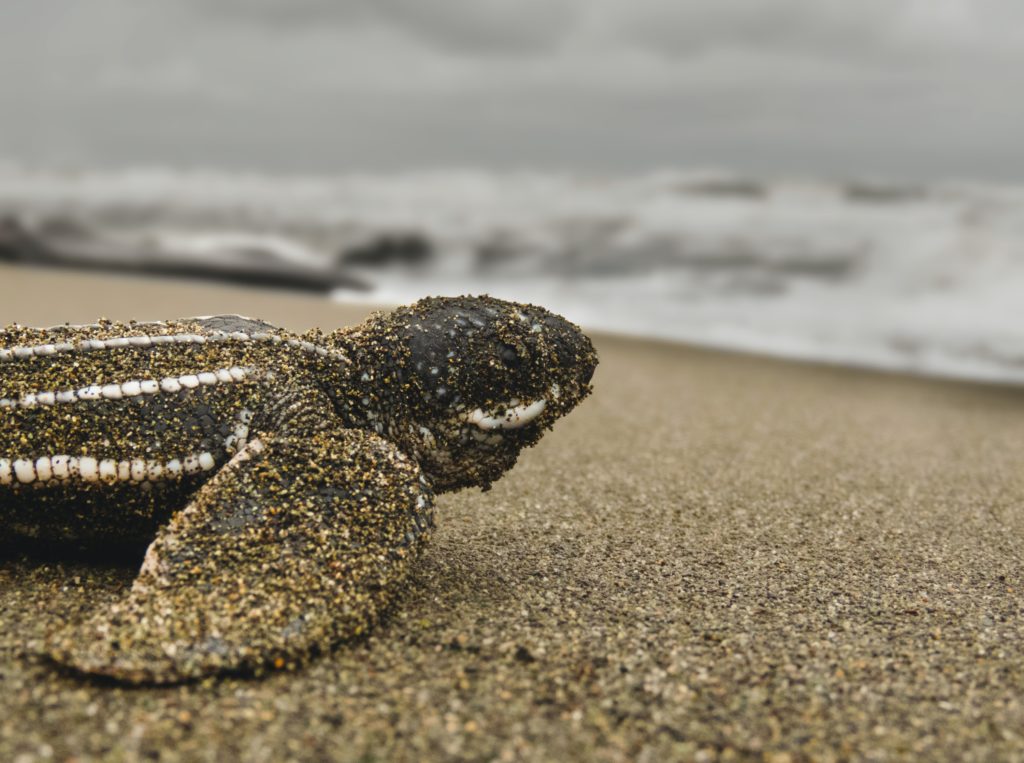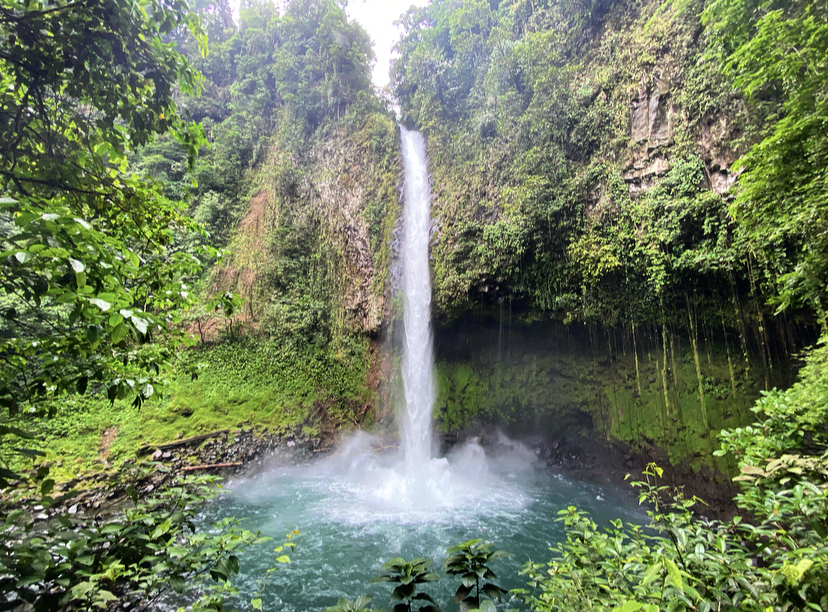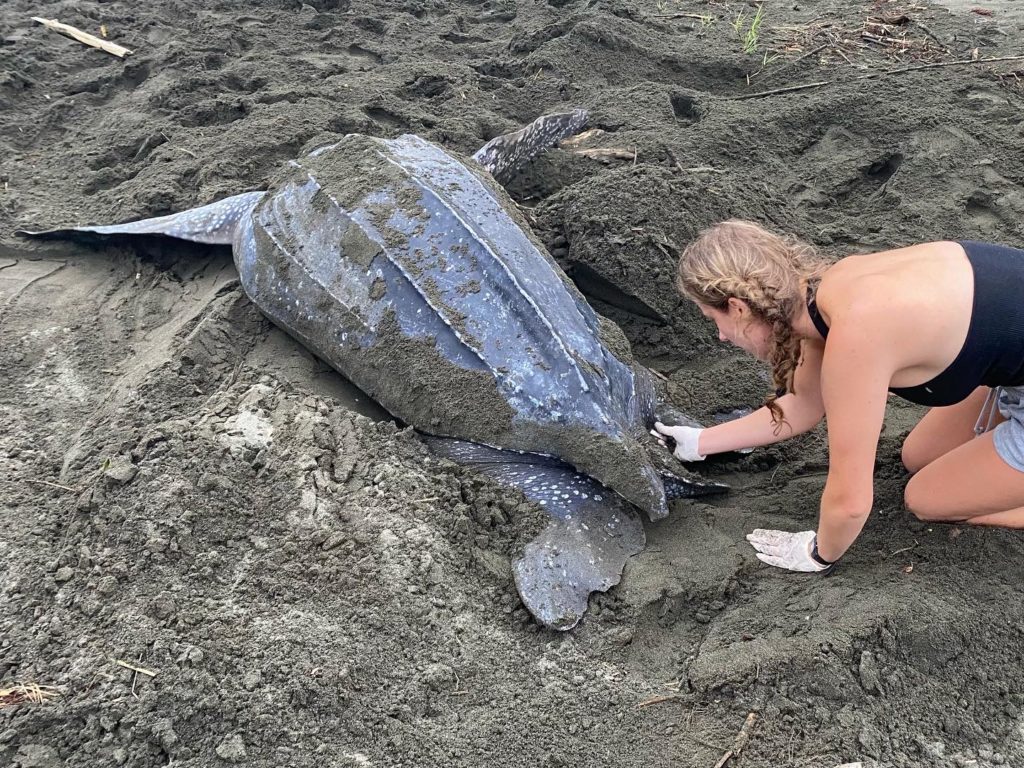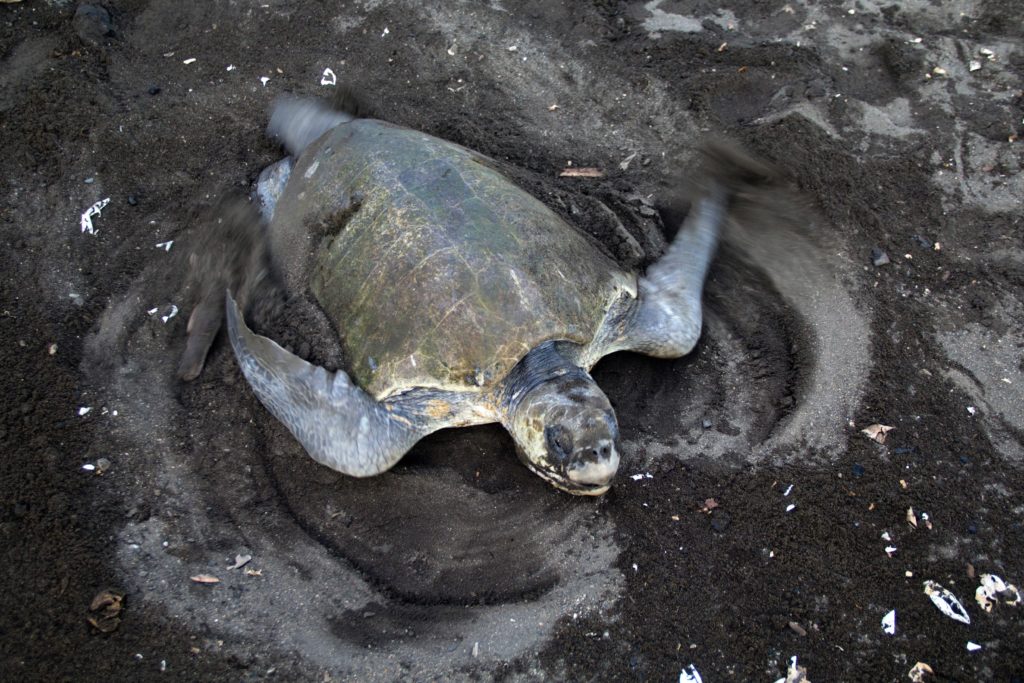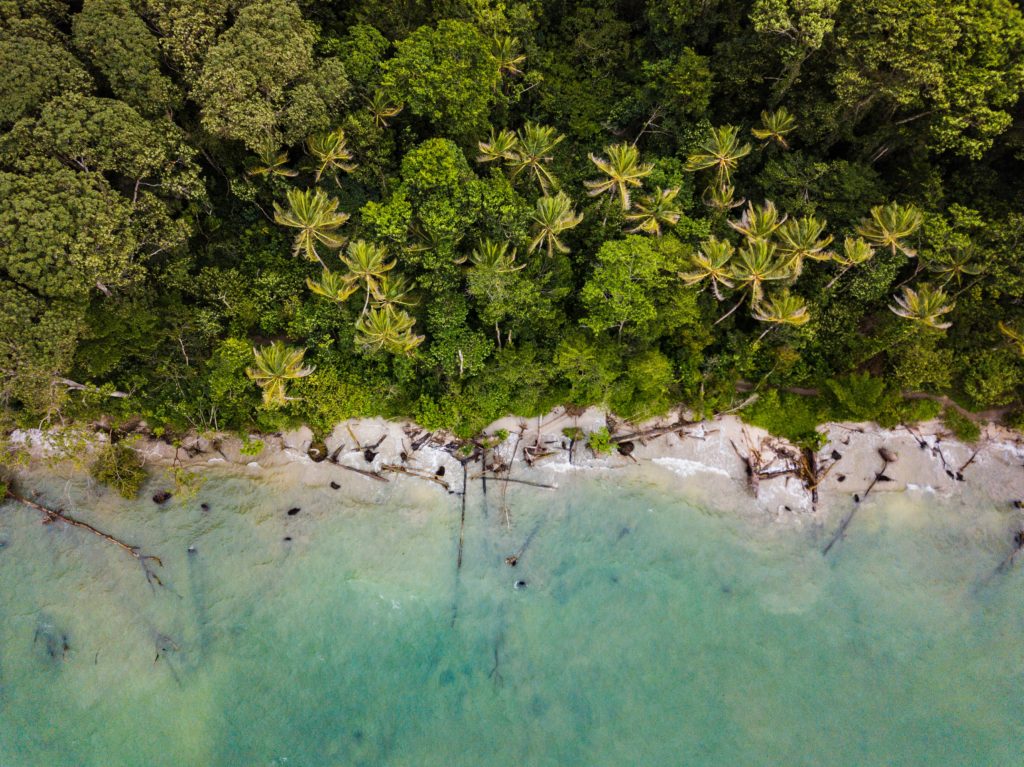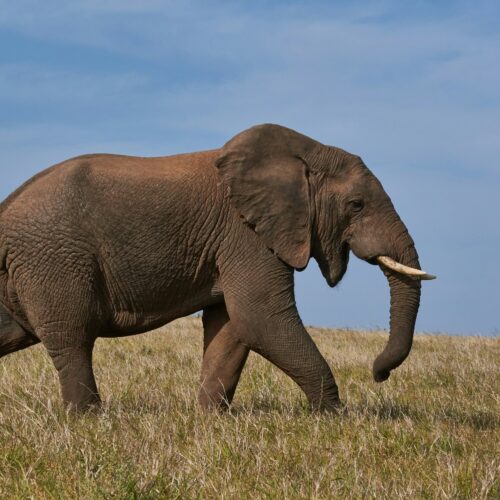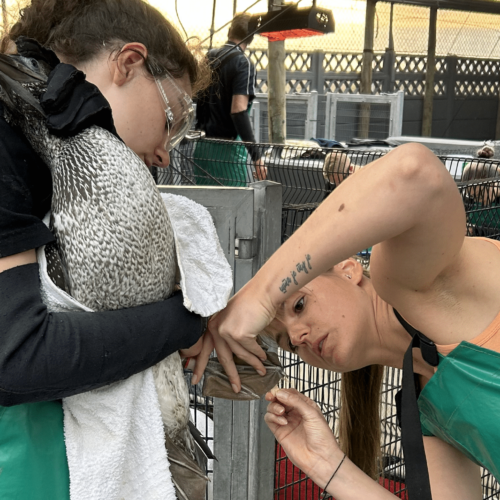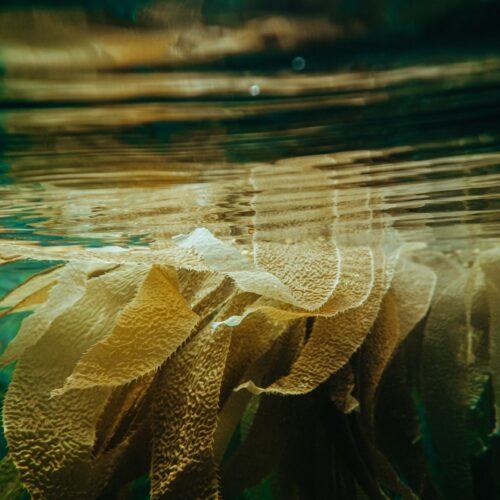How does working with leatherback turtles differ from your previous experience?
Leatherback turtles compared to green turtles (which I have worked with in the past) are comparatively much larger in size. Green turtles weigh roughly 100kg compared to leatherback turtles weighing an astonishing 500kg. This means you have to really work with the turtle and take your measurements opportunistically when she is taking a break, or whilst she is in nesting trance. This is critical as otherwise you will be covered in sand or slapped by a flipper.
Additionally, in the past all my work has been in Saudi Arabia where you can expect the weather to be dry and hot each day. In Costa Rica, the weather is far less predictable, especially on windy nights when clouds can form in minutes and therefore working during a downpour is highly likely.
What has been the greatest challenge so far?
Aside from many sleepless nights, which are a prerequisite for turtle work, unfortunately on our first Saturday night poachers arrived at the beach along with many people from San José. During our morning walk at 5am the hatchery is not guarded and a poacher dug up my nest and stole the eggs I had relocated the night before. This was hugely disheartening for me and highly unusual since it has only happened twice in the 20 years the station has been operating.
Usually the week before Easter, ‘Santa Semana,’ the beach is packed with people and poachers, with up to 2000 people congregating around the lagoon. It therefore can become dangerous to undertake our work at night. However, with COVID restrictions this year and less people travelling, this has enabled us to patrol the beach every night. As a result, we have successfully managed to save more eggs in 2021 than ever before at this time of year.



